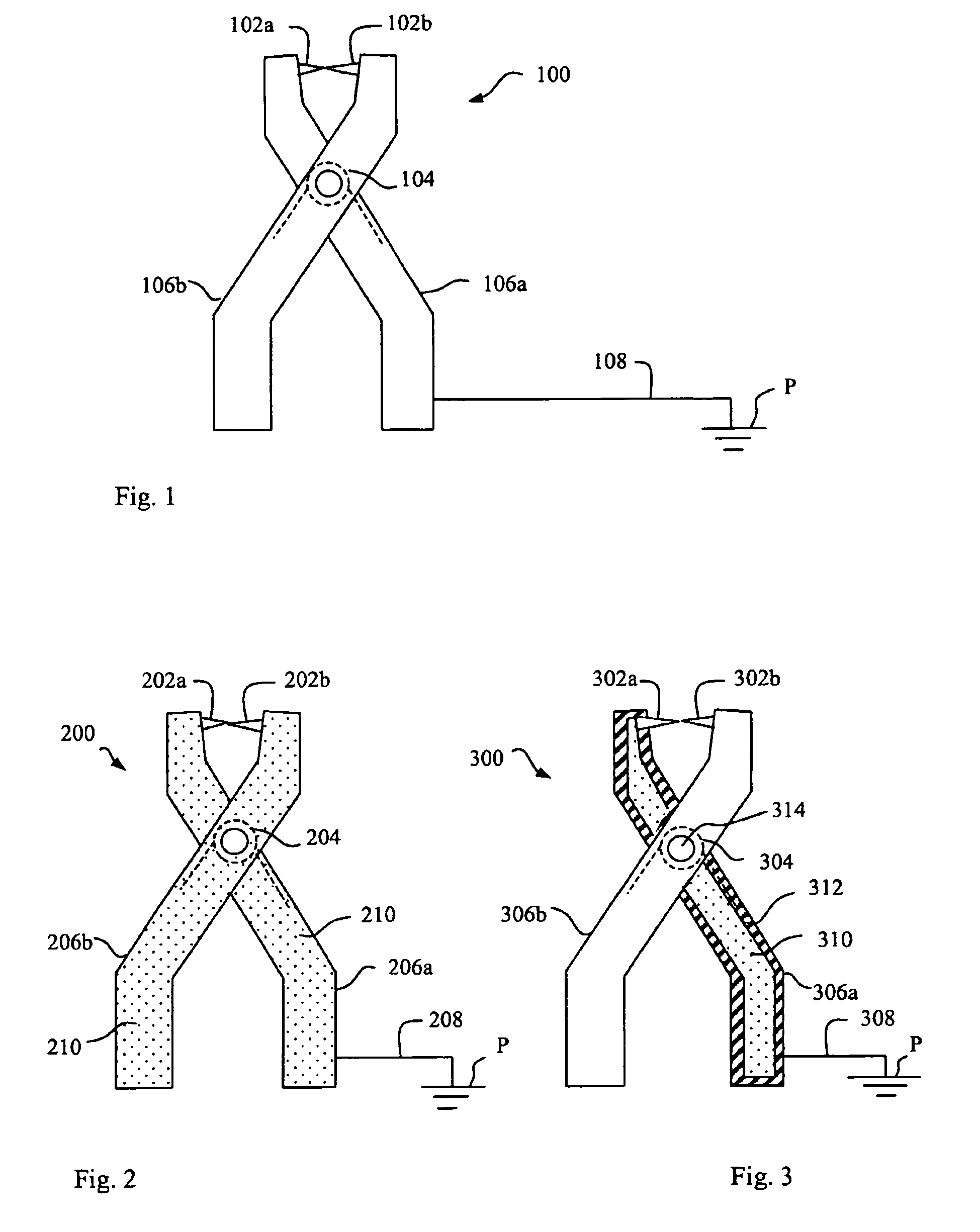Device for dissipating static electricity
a static electricity and charge technology, applied in the direction of electrostatic charges, relays, electrical apparatus, etc., can solve the problems of spark formation, explosion and/or fire, disastrous consequences, etc., and achieve the effect of safe dissipation of static electricity and simple yet effective solution
- Summary
- Abstract
- Description
- Claims
- Application Information
AI Technical Summary
Benefits of technology
Problems solved by technology
Method used
Image
Examples
Embodiment Construction
[0019]FIG. 2 illustrates a first embodiment of an electrically dissipating device, in accordance with the present invention. In this example, the dissipating device is formed as a clamp 200 having the same exterior shape as the known clamp shown in FIG. 1, i.e. with two conductive contacting means 202a and 202b which are biased against each other by means of a spring 204, and two arms 206a and 206b connected to respective contacting means. However, other embodiments of the shape of the dissipating device are also possible within the scope of the present invention, which is thus not limited by the shown examples.
[0020]In order to primarily avoid the formation of sparks when the clamp is applied on an object to be drained / grounded, the contacting means 202a, b of the dissipating device are connected to a dissipation cable 208 via a material in the clamp having a substantially restricted capability of conducting electricity, hereafter called “low conductive material”, in contrast to hi...
PUM
 Login to View More
Login to View More Abstract
Description
Claims
Application Information
 Login to View More
Login to View More - R&D
- Intellectual Property
- Life Sciences
- Materials
- Tech Scout
- Unparalleled Data Quality
- Higher Quality Content
- 60% Fewer Hallucinations
Browse by: Latest US Patents, China's latest patents, Technical Efficacy Thesaurus, Application Domain, Technology Topic, Popular Technical Reports.
© 2025 PatSnap. All rights reserved.Legal|Privacy policy|Modern Slavery Act Transparency Statement|Sitemap|About US| Contact US: help@patsnap.com


